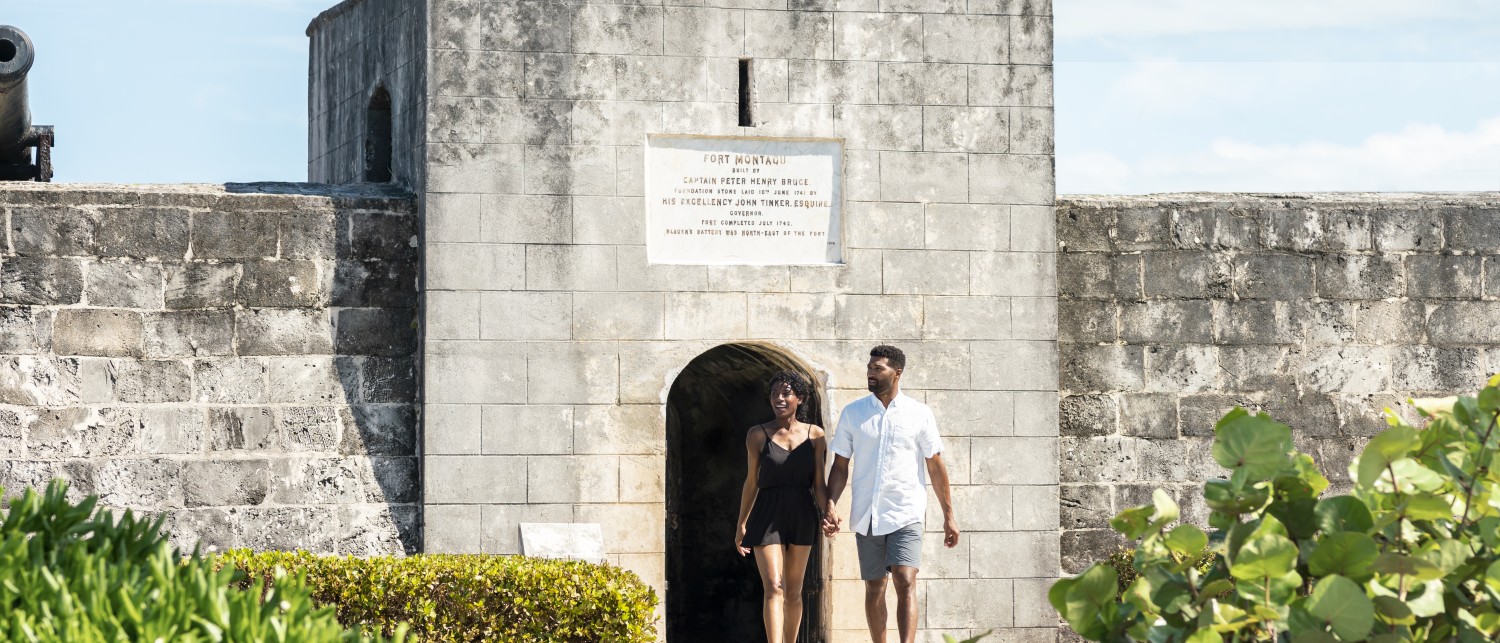
Built to face threats and thwart enemies, forts stood as fierce protectors for settlements and colonial interests at a time when battles were waged to advance imperialist agendas. The forts of Nassau, located on New Providence Island, were no different. Fort Charlotte, Fort Fincastle, and Fort Montagu were all constructed during the 18th century when The Bahamas, then a British colony, was frequently being threatened by Spanish and French forces. The histories and significance of the forts of Nassau are woven into a variety of different histories beyond the battle for Bahamians, including the introduction of new and diverse populations to the social milieu.
Fort Charlotte, located west of downtown Nassau, is the largest of the three remaining forts and stands in a commanding position atop a hill overlooking the entrance to Nassau Harbour. Fort Charlotte is a complex consisting of three parts – the main fortification to the east called Fort Charlotte, a middle bastion called Fort Stanley, and a western auxiliary known as Fort D’Arcy. Fort Charlotte, the main fortification, was built to include a drawbridge, souterrains, an arched bombproof casemate, casemates dug in the rock, magazines, guard room, a furnace for a heating shot, and a ditch (now usually referred to as the moat). The troops that garrisoned New Providence fortifications were housed in barracks situated to the east of the fort. The barracks building no longer exists, but its footprint can be viewed on the ground where it once stood.
While the forts themselves (which included six smaller outposts known as batteries) saw the threat on many occasions, they did not see significant action from battle. However, the lives of the soldiers stationed in them would have far-reaching impacts on Bahamian society. The barracks to the east of the Fort Charlotte complex were first home to European soldiers stationed at New Providence. These men frequented Bahamian establishments and participated in social and religious activities, especially when the barracks were on the site of Fort Nassau within the town. Unfortunately, these soldiers had a very high mortality rate from yellow fever, even after the new barracks were built near Fort Charlotte. British military commanders for the West Indies made the controversial decision, in 1801, to send black troops of the British West India Regiments (WIR) to garrison New Providence forts. These free black soldiers entered Bahamian society at a time when local whites were uneasy about the potential influence of blacks coming to The Bahamas from the French colony of Saint-Domingue (which became Haiti in 1804).
The British West India Regiments were infantry units for the British Army in its Caribbean colonies. While commanding officers remained European, the soldiers in the regiments were African men. The shift was due to practicality. It was difficult for European soldiers to withstand the Caribbean’s tropical climate and diseases, and The Bahamas became a perfect location for the recruitment of African men freed from British ships transporting African captives illegally after the 1807 Act for the Abolition of the Slave Trade. Many ships illegally engaging in slave trading were intercepted and brought to Nassau where their African “cargo” were liberated. Those recruited to the WIR were freed immediately while all others were required to serve periods of apprenticeship from 7 to 14 years before being considered fully free. The troops of the British West India Regiment resided at the Fort Charlotte barracks, but many also interacted with and married Bahamian women. The soldiers established families and legacies in The Bahamas that last through to the present day.
The historic forts of Nassau bear a significant military history that links The Bahamas to wars in Europe and within the region, including the American Revolutionary War. However, the forts also bear a social history and significance as the men stationed at the barracks to defend the island at the various forts in the event of attack also became involved in Bahamian society. Many WIR soldiers remained in The Bahamas and contributed to the development of the Over-the-Hill community even after the British military left The Bahamas in 1891.
Resources By: https://www.bahamas.com/blog/historic-forts-of-nassau
Leave a Reply